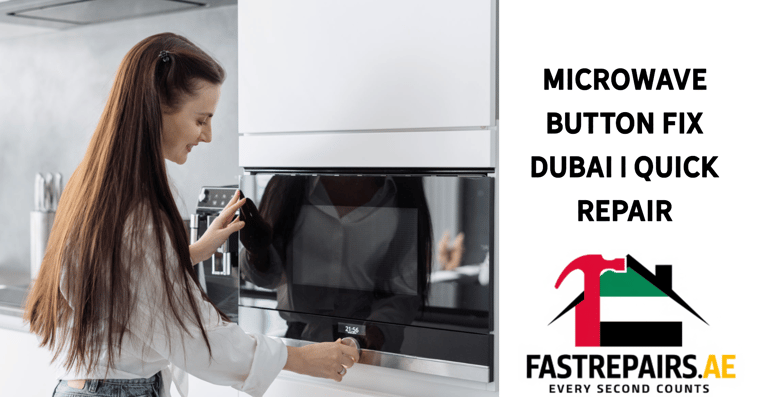Microwave Button Fix Dubai | Quick Repair
Unresponsive microwave buttons? We repair control panels & membrane switches in Dubai. Same-day service!
REPAIRS
4/21/20258 min read
Understanding Microwave Button Functionality
Microwave ovens are an essential appliance in modern kitchens, leveraging advanced technology to simplify cooking processes. At the core of this technology lies the microwave button functionality, which encompasses the operational mechanisms of touchpads and buttons on the control panel. Understanding how these components work is crucial for troubleshooting and repairing any issues that may arise, particularly in diverse settings such as Dubai.
The microwave control panel typically consists of a touchpad and a series of mechanical buttons. The touchpad offers an interactive interface, allowing users to easily select cooking times and power levels. When a user presses a button, it sends an electrical signal through a circuit board to the microwave’s control system. This system interprets the command and activates the corresponding heating elements and functions. This functionality is vital, as it influences not only how the microwave operates, but also the efficiency of meal preparation.
Gravity plays a role as well; the buttons are designed to be responsive to the slightest touch, which allows them to function effectively under various circumstances. However, environmental factors, such as humidity or dust exposure common in a city like Dubai, can interfere with button functionality. When buttons fail to respond, it often indicates issues with the touchpad circuitry or the button sensitivity mechanism.
In addition to physical responsiveness, the significance of the control panel mechanics should not be underestimated. Each button and touchpad feature has a distinct function, from defrosting settings to timed cooking. Familiarity with these functionalities provides the user with greater control over microwave operations, which is an asset in troubleshooting and repair situations. Thus, a comprehensive understanding of microwave button functionality is an essential component for effective maintenance and long-term usability.
Impact of Humidity on Touchpad Circuits
Humidity plays a crucial role in the functionality of microwave touchpad circuits, especially in environments with elevated moisture levels, such as Dubai. The ingress of humidity into electronic devices can lead to a wide range of operational issues, the most common being unresponsive buttons or erratic functioning of the touchpad. Understanding the underlying science of moisture intrusion is essential for anyone operating microwaves in humid climates.
When humidity levels rise, moisture can penetrate the internal components of microwaves, forming condensation on sensitive touchpad circuitry. This moisture can cause corrosion, short circuits, and even permanent damage to microcontroller chips. The touchpad, usually equipped with a capacitive or resistive sensing mechanism, relies on precise electrical properties to register user input. When moisture interferes with these electrical properties, it impairs the touchpad's ability to function properly, leading to frustrating user experiences.
Additionally, high humidity can promote the growth of mold or mildew within appliances, further complicating the situation. These organic growths can leave residues and block contact points on the circuits, exacerbating the issues already attributed to moisture intrusion. Therefore, maintaining a dry environment is paramount to prolonging the lifespan and functionality of microwaves.
To mitigate the impact of humidity, several preventative measures can be employed. Utilizing desiccants within the microwave cavity, ensuring proper ventilation around the appliance, and avoiding placement in particularly humid spaces like kitchens during cooking can significantly reduce humidity exposure. Regular maintenance and cleaning of the touchpad can also prevent any buildup of moisture and dirt. By understanding the relationship between humidity and microwave touchpad circuits, users can take appropriate actions to ensure their appliances remain reliable and functional.
Decoding Common Microwave Error Codes
Understanding error codes displayed on a microwave is crucial for effective troubleshooting and repair. Among the various codes, F3 and E2 are commonly encountered errors that indicate specific issues within the appliance. Each code serves as a diagnostic message aimed at assisting users in identifying and addressing faults promptly.
The F3 error code typically signifies a malfunction related to the temperature sensor. This code may appear due to an open or shorted sensor, leading to inaccurate temperature readings. If a user encounters the F3 code, it is advisable to inspect the sensor connections for any physical damage or disconnection. Furthermore, testing the sensor's resistance with a multimeter can help determine its functionality. A malfunctioning temperature sensor usually requires replacement to restore proper microwave operation.
On the other hand, the E2 error code often points towards a problem with the door latch or door switch. Microwaves are designed to operate only when the door is securely closed, and an E2 code could indicate that the appliance is unable to confirm this condition. Common causes include misalignment of the door, damaged door hinges, or faulty door switches. Users should first ensure that the door is closing properly. If the issue persists, inspecting the door latches and switches for wear or damage is essential. In some cases, replacing the defective components may resolve the error.
By understanding the significance of these error codes, users can better navigate repair processes. Recognizing that the F3 and E2 codes refer to specific issues allows individuals to approach repairs methodically. This knowledge ultimately supports a more efficient resolution, whether through DIY interventions or by seeking professional assistance. In the realm of appliance repair, such insights are invaluable for restoring functionality and ensuring the longevity of microwaves.
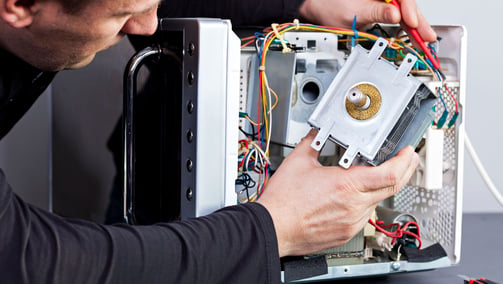

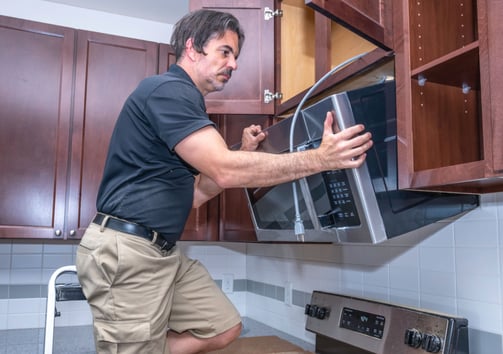

FastRepairs’ Conductive Gel Repair Method
FastRepairs has pioneered an innovative solution for fixing microwave control panels and membrane switches through its unique conductive gel repair method. This advanced technique addresses common issues faced by microwave users, such as unresponsive buttons or erratic control functions. By utilizing a specially formulated conductive gel, FastRepairs ensures that repairs are not only effective but also performed quickly, minimizing the downtime of your appliances.
The process begins with a thorough assessment of the microwave’s control panel. Technicians identify areas where the original conductive traces have deteriorated due to wear and tear. After cleaning the affected surfaces, the conductive gel is precisely applied to the damaged regions. This gel acts as a replacement for the original conductive pathways, restoring the functionality of the control panel. It seamlessly aligns with the existing layout, thus ensuring that the microwave operates as intended.
One of the key advantages of the conductive gel repair method is its efficiency. Traditional methods often require extensive disassembly of the appliance, leading to longer repair times. In contrast, FastRepairs’ technique is designed for quick application, allowing technicians to complete repairs in a fraction of the time. Furthermore, the resultant connections are both durable and resistant to wear, prolonging the life of the repaired components.
This approach is not solely about speed; it also places significant emphasis on maintaining high standards of quality. Each application is carefully monitored to ensure maximum conductivity and reliability. This meticulous attention to detail means that users can trust in the longevity of their repairs, reducing the likelihood of future issues. FastRepairs’ commitment to excellence reflects its reputation as a leader in microwave repair services in Dubai.
Cost Analysis | Replacement vs. Repair
When assessing whether to replace or repair microwave control panels, it is essential to conduct a thorough cost analysis. Various factors influence the overall expenses related to both options. Primarily, the cost of replacement parts can vary significantly based on the type and model of the microwave. High-end appliances typically come with more expensive components compared to budget-friendly models. Consequently, the initial assessment of the microwave's brand and model is vital when deciding on the best course of action.
Repairing microwave controls can often be more economical, especially when minor issues, such as loose connections or faulty buttons, are the primary concern. In many cases, a qualified technician can diagnose the problem quickly, potentially leading to a repair bill that is much lower than the cost of a new unit. Typical repair costs may range from $50 to $300, depending on the problem's complexity and local labor rates. Furthermore, repairs can often be completed in a single visit, allowing for quick resolution and usage of the appliance without significant interruption.
On the other hand, replacing microwave control panels may seem enticing, especially for those who prefer a seamless experience without dealing with repeated repairs. Replacement costs typically include the price of new components and installation, which can increase the total expenditure to $200 or more. If the microwave is an older model, sourcing parts might become more difficult, potentially driving the price up due to scarcity.
Ultimately, the decision to repair or replace hinges on several considerations: the age of the microwave, the cost of repairs versus replacement, and individual preference for long-term reliability. By analyzing these factors judiciously, consumers can make informed choices that best suit their needs and budgets. This careful consideration helps ensure electrical appliances remain functional and satisfactory over time.
Certified technicians with extensive experience.
24/7 emergency services.
Transparent and competitive pricing.
Let’s Get Started
Visit FastRepairs.ae or call us at +971528913379 to schedule your repair today. Experience seamless, stress-free service with FastRepairs.ae!
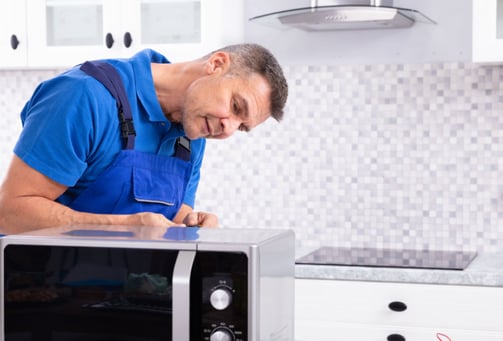

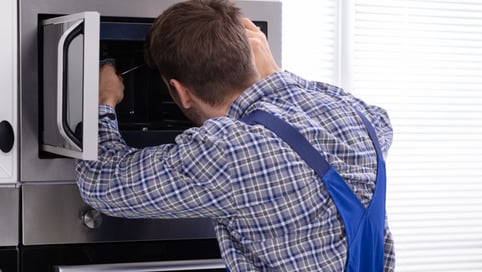

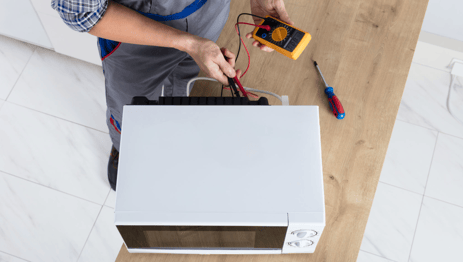



Safety Protocols for Handling Capacitor Discharges
When dealing with microwave repairs, particularly concerning capacitor discharges, it is crucial to adhere to strict safety protocols to ensure both personal safety and the proper functioning of the appliance. Capacitors can store significant electrical energy, which poses a risk of electric shock if not managed carefully. Therefore, understanding the necessary precautions is paramount for anyone attempting to repair their microwave.
Before commencing repairs, always disconnect the microwave from the power source. This ensures that there is no electrical current flowing into the unit during the repair process. Once disconnected, allow a few minutes for the capacitors to naturally discharge. However, this is not enough; one must actively discharge the capacitors to ensure all stored energy is released. To safely discharge a capacitor, use an appropriate insulator, such as a rubber-handled screwdriver, and connect it across the terminals of the capacitor. This step should be conducted cautiously and preferably with gloves to avoid risk.
Additionally, it is advisable to use a multimeter to check the discharge before proceeding with any repairs. This device helps confirm that the voltage level is safe and that no residual charge remains which could lead to electrical shocks. It is also essential to stay focused and work in a dry environment, as moisture can increase the risk of accidental discharge. Always wear appropriate protective gear, including safety goggles and gloves, to safeguard against potential hazards.
In conclusion, adhering to these safety protocols is vital when dealing with capacitor discharges in microwave repairs. These precautions not only protect the technician but also contribute to maintaining the integrity of the microwave itself. By following the outlined steps diligently, the risk of electrical hazards can effectively be mitigated.
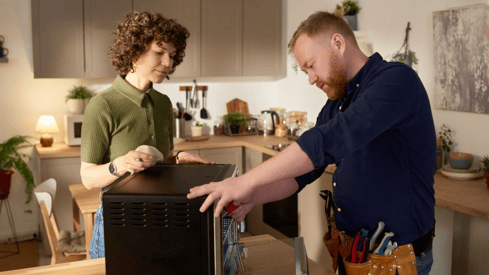

FastRepairs.ae
Reliable repair solutions for your needs.
Contact
Contact Form
contact@fastrepairs.ae
© 2024. All rights reserved.
This website is developed and managed by PranveraSolutions.
PranveraSolutions is not affiliated with fastrepairs.ae and is not responsible for any content, services, or actions of fastrepairs.ae. Any issues or legal matters should be directed to fastrepairs.ae
Hours
Monday, 9:30 am–8 pm
Tuesday, 9:30 am–8 pm
Wednesday, 9:30 am–8 pm
Thursday, 9:30 am–8 pm
Friday, 9:30 am–8 pm
Saturday, 9:30 am–7 pm
Sunday, 9:30 am–7 pm
Blog

